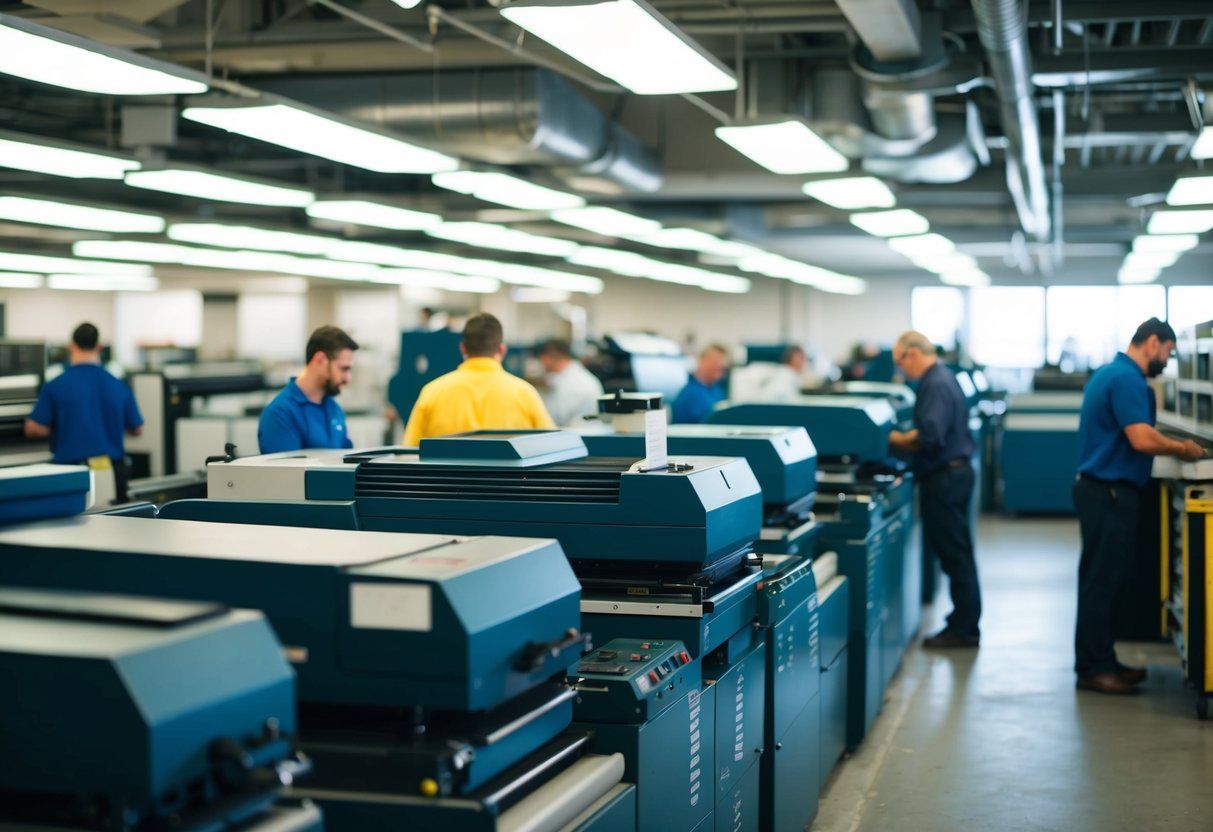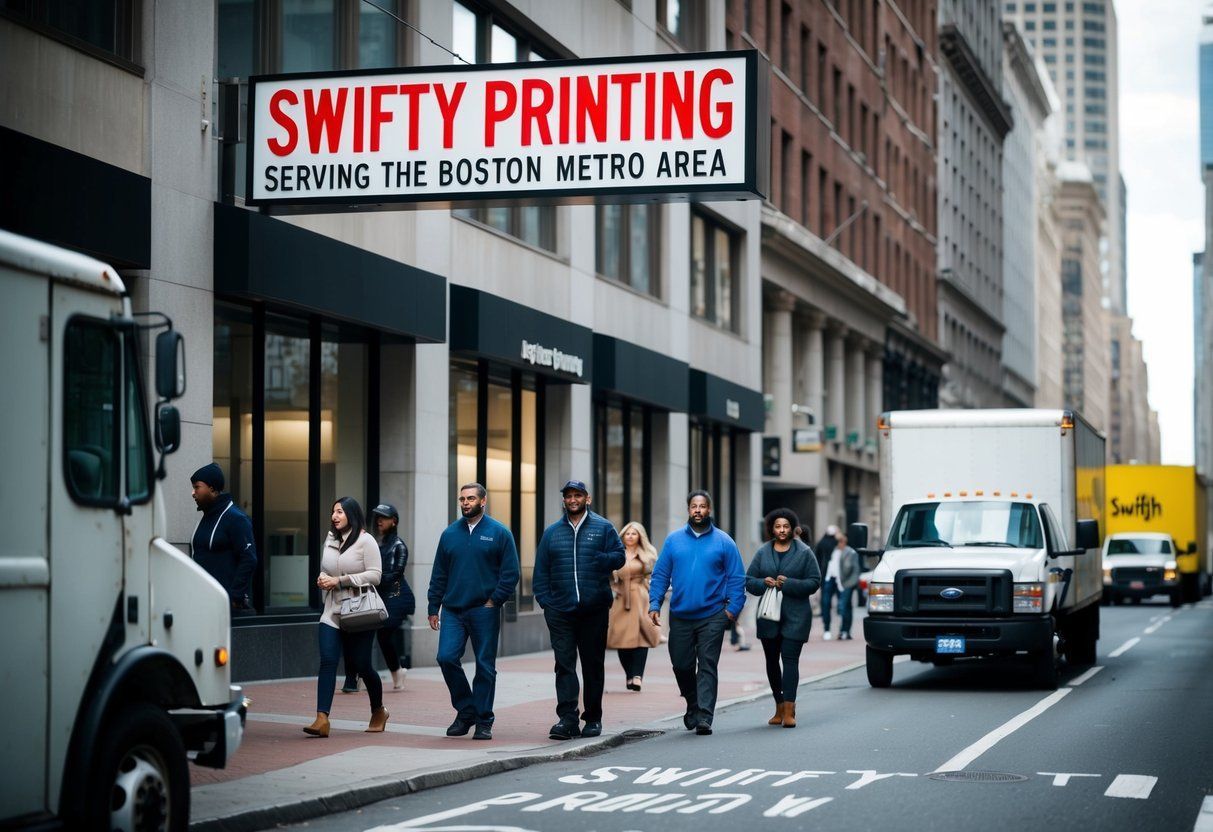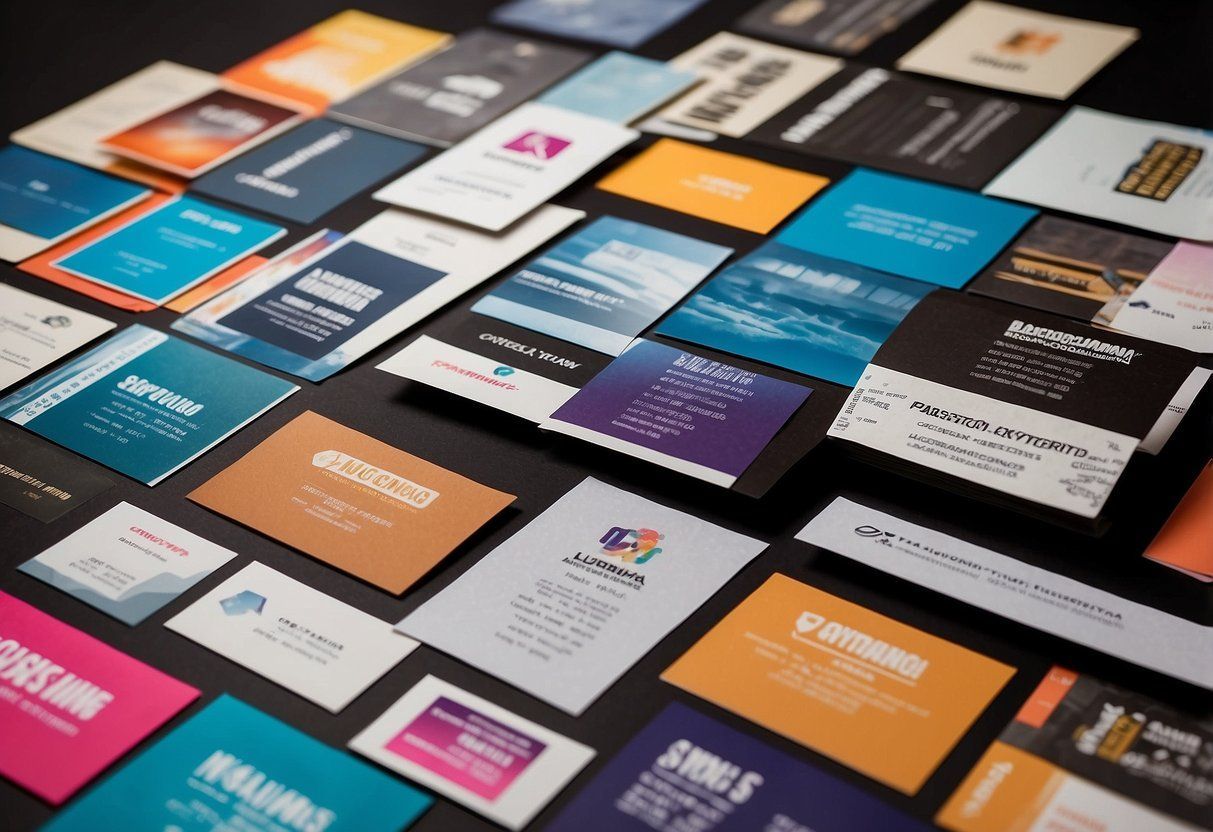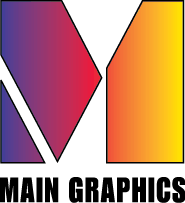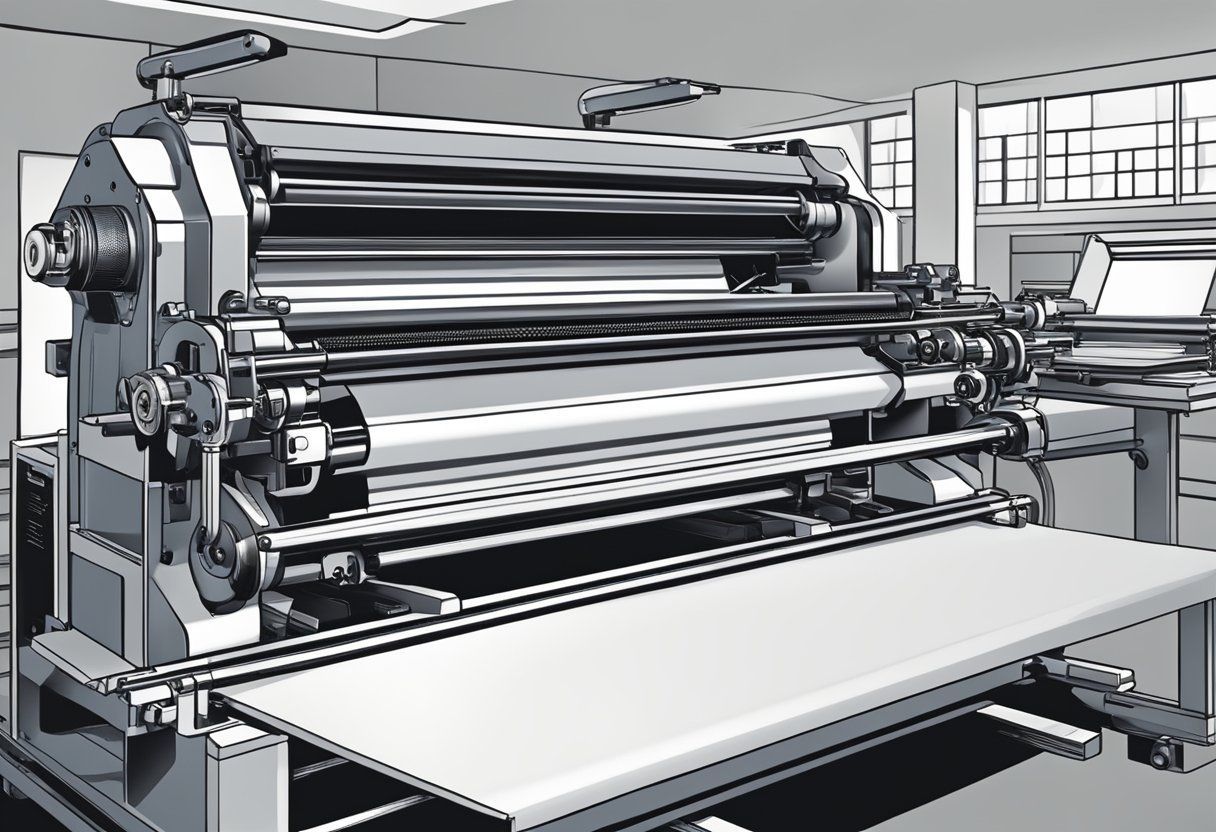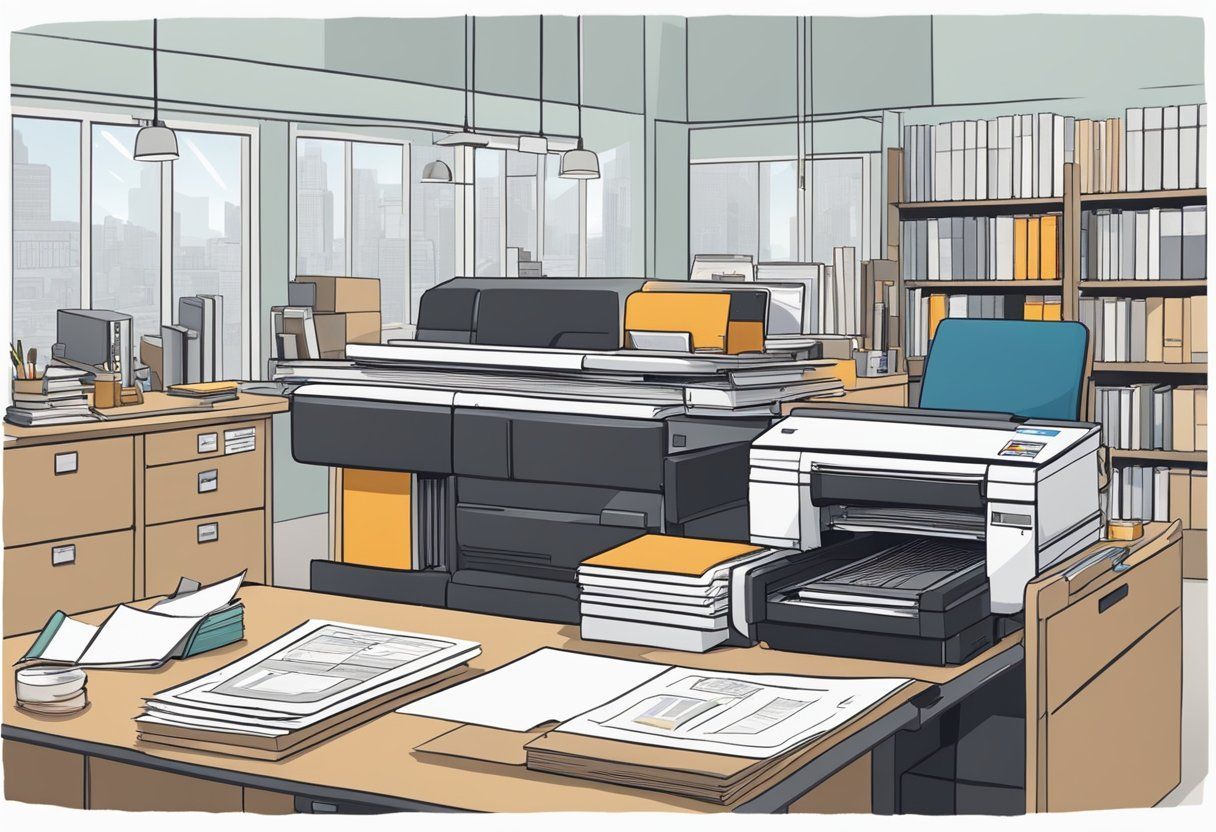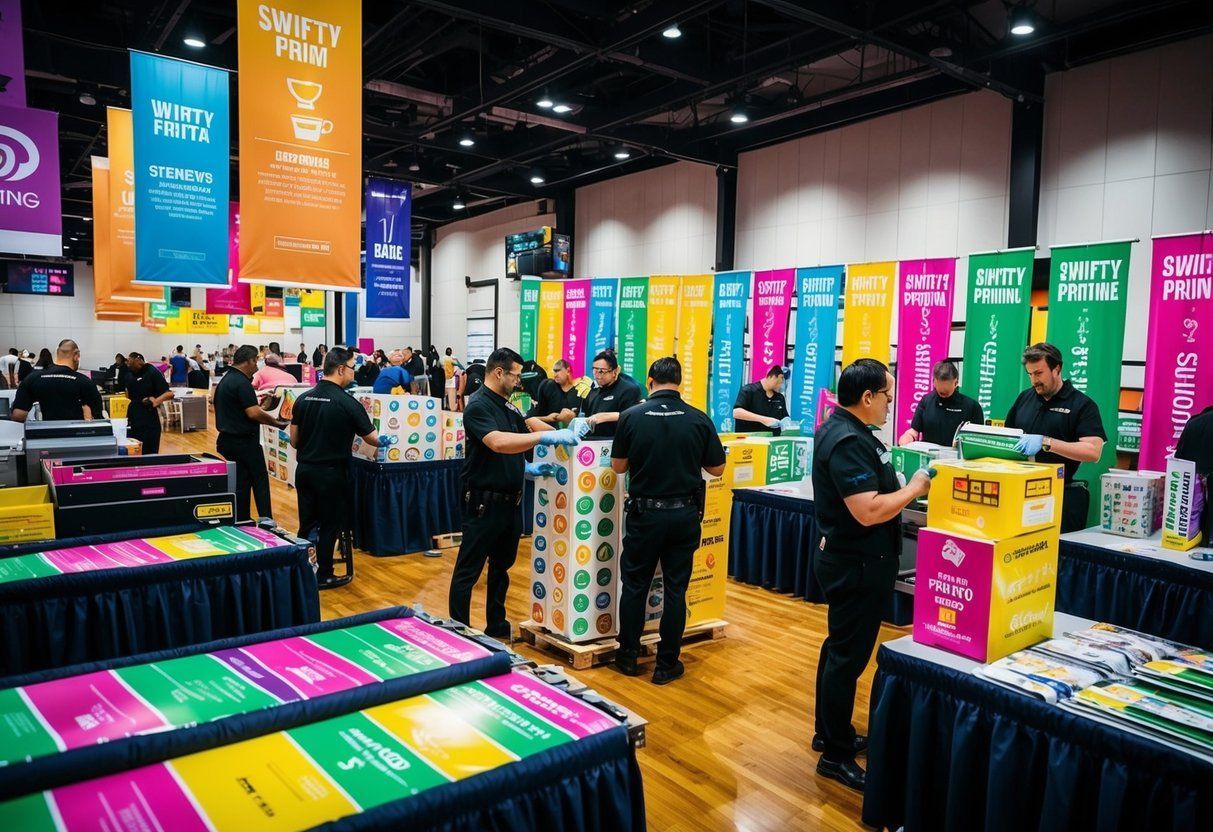Printed Banners and Posters: How to Effectively Advertise Your Business
Printed banners and posters have been a mainstay of advertising for decades. Despite the rise of digital marketing, these traditional forms of advertising remain relevant and effective in promoting businesses of all sizes. In fact, printed banners and posters offer a number of unique advantages that are difficult to achieve through other forms of marketing.

Understanding Your Audience is key to creating effective printed banners and posters. Knowing who your target audience is and what they respond to is crucial in designing effective marketing materials. Whether you are targeting a specific demographic or a broad audience, understanding their needs and preferences can help you create a message that resonates with them and encourages them to take action.
Designing Effective Banners and Posters is another important factor in successful print marketing. Your design should be eye-catching, easy to read, and visually appealing. It should also be consistent with your brand identity and convey a clear message that aligns with your marketing goals. By following these key principles, you can create banners and posters that effectively promote your business and attract new customers.
Key Takeaways
- Understanding your audience is crucial for effective print marketing.
- Designing eye-catching and consistent banners and posters is key to successful advertising.
- Integrating printed banners and posters with other marketing efforts can increase their effectiveness.
Understanding Your Audience
Identifying the Target Audience
Before creating any printed banners or posters, it is essential to identify the target audience. This refers to the group of people who are most likely to be interested in your product or service. For example, if you are advertising a new line of beauty products, your target audience might be women aged 18-35.
To identify your target audience, consider factors such as age, gender, income, education level, and location. You can also use market research tools such as surveys and focus groups to gain a better understanding of your audience’s needs and preferences.
Analyzing Audience Needs and Preferences
Once you have identified your target audience, it is important to analyze their needs and preferences. This will help you create printed banners and posters that are most likely to resonate with them.
Consider what your target audience is looking for in a product or service. What are their pain points, and how can your product or service solve them? What are their preferences in terms of design, color, and messaging? Use this information to create banners and posters that speak directly to their needs and preferences.
By understanding your audience and creating targeted banners and posters, you can increase the effectiveness of your marketing efforts and reach your desired customers more effectively.
Designing Effective Banners and Posters
When it comes to advertising your business with banners and posters, designing an effective layout is crucial. A well-designed banner or poster can capture the attention of potential customers and convey your brand message clearly. Here are some key design elements to consider when creating your banners and posters.
Key Design Elements
An eye-catching design is essential for your banner or poster to stand out from the crowd. Using bold colors and striking images can help draw attention to your message. Additionally, using a clear and easy-to-read font is important to ensure that your message is legible from a distance.
Incorporating Branding and Logo
Incorporating your branding and logo is essential to ensure that your banner or poster is consistent with your brand identity. Your logo should be prominently displayed and easily recognizable. Additionally, using your brand’s color palette can help create a cohesive and recognizable design.
Creating an Eye-Catching Layout
Creating an eye-catching layout is crucial to ensure that your banner or poster is visually appealing. Using a clear hierarchy of information, such as a headline and subheadings, can help guide the viewer’s eye through your message. Additionally, using images and graphics can help break up text and add visual interest to your design.
Overall, designing an effective banner or poster requires careful consideration of key design elements, incorporating your branding and logo, and creating an eye-catching layout. By following these guidelines, you can create a visually appealing and effective advertising tool for your business.
Crafting a Compelling Message
When it comes to designing printed banners and posters to advertise your business, crafting a compelling message is crucial. A message that resonates with your target audience will be more effective in generating interest and attracting customers. Here are some tips for creating a message that gets noticed:
Writing a Clear Headline
The headline is the first thing people will see when they look at your banner or poster. It should be clear, concise, and attention-grabbing. Use bold and large font to make it stand out. Make sure the headline clearly communicates what your business offers and what makes it unique.
Including a Strong Call to Action
A call to action (CTA) is a statement that encourages the reader to take a specific action, such as visiting your website or calling your business. It’s important to include a strong CTA to increase the chances of converting potential customers into actual customers. Use action-oriented language and make it easy for people to take the desired action.
Ensuring Legible Text and Contact Information
Make sure the text on your banner or poster is easy to read from a distance. Use a font that is large enough to be legible, and avoid using fancy or cursive fonts that may be difficult to read. Additionally, include your contact information such as your phone number, email address, and website URL. This will make it easy for people to reach out to you and learn more about your business.
By following these tips, you can craft a message that effectively communicates your business’s value proposition and encourages potential customers to take action.
Choosing the Right Materials and Sizes
When it comes to creating effective banners and posters for advertising your business, choosing the right materials and sizes can make a big difference in the success of your campaign. Here are some tips to help you make the right choices.
Selecting Material Types
One of the most important decisions you’ll need to make is what type of material to use for your banner or poster. There are several different options to choose from, each with its own advantages and disadvantages.
- Vinyl: This is a popular choice for banners because it’s durable, weather-resistant, and can be printed in high-quality. It’s also relatively affordable, making it a good choice for businesses on a budget.
- Mesh: Mesh banners are a good choice for outdoor use because they allow wind to pass through, which reduces the risk of damage from strong gusts. They’re also lightweight and easy to install.
- Fabric: Fabric banners are a good choice for indoor use because they have a softer, more elegant look than vinyl or mesh. They’re also lightweight and easy to transport.
Determining Appropriate Sizes and Shapes
Once you’ve chosen your material, you’ll need to decide on the appropriate size and shape for your banner or poster. Here are some things to consider:
- Location: Where will your banner or poster be displayed? If it’s going to be hung on a wall or fence, you’ll need to make sure it fits the space properly. If it’s going to be displayed outdoors, you’ll need to consider the distance from which it will be viewed.
- Message: What message are you trying to convey? If you have a lot of information to share, you’ll need a larger banner or poster. If you’re promoting a specific product or service, you may want to choose a shape that highlights that item.
- Budget: Larger banners and posters will naturally cost more than smaller ones, so you’ll need to balance the size and shape with your budget.
By taking the time to choose the right materials and sizes for your banners and posters, you can create effective advertising campaigns that get your message in front of the right audience.
Strategic Placement and Distribution

Maximizing Visibility at Events
Printed banners and posters can be highly effective in promoting your business at events. To maximize visibility, it is important to strategically place your banners and posters in high-traffic areas. For example, you may want to consider placing them near the entrance or exit of the event, or in areas where people tend to congregate, such as near food vendors or restrooms.
Another effective strategy is to use banners and posters to create a visual focal point that draws people in. This can be achieved by using bold colors, eye-catching graphics, and clear messaging that communicates the value of your business.
Utilizing High-Traffic Locations
In addition to events, printed banners and posters can be used to promote your business in high-traffic locations such as shopping malls, airports, and train stations. To maximize visibility, it is important to strategically place your banners and posters in areas where people are likely to see them. For example, you may want to consider placing them near the entrance or exit of the location, or in areas where people tend to congregate, such as near food vendors or restrooms.
Another effective strategy is to use banners and posters to create a visual focal point that draws people in. This can be achieved by using bold colors, eye-catching graphics, and clear messaging that communicates the value of your business.
Leveraging Direct Mail and Packaging
Printed banners and posters can also be used to promote your business through direct mail and packaging. For example, you may want to consider including a small poster or banner in your direct mail campaigns, or using custom packaging that features your business’s branding and messaging.
To maximize the effectiveness of these strategies, it is important to ensure that your banners and posters are designed with your target audience in mind. This means using messaging and graphics that are relevant and appealing to your target customers, and ensuring that your banners and posters are placed in areas where they are likely to be seen.
Integrating with Other Marketing Efforts

To maximize the impact of printed banners and posters, businesses should integrate them with other marketing efforts. This can help to create a cohesive and consistent message across all channels, increasing brand recognition and customer engagement.
Combining with Digital Marketing
One effective way to integrate printed banners and posters with digital marketing is to include QR codes or custom URLs on the prints. This allows customers to easily access a business’s website or social media pages, increasing online engagement and potentially leading to conversions.
Another way to combine printed materials with digital marketing is to create social media posts featuring the prints. This can help to generate buzz and excitement around the business, as well as increase the reach of the prints beyond their physical location.
Synchronizing with Promotional Material
Printed banners and posters can also be synchronized with other promotional material, such as flyers, brochures, and business cards. By using consistent branding and messaging across all materials, businesses can create a unified and memorable image in the minds of customers.
One way to synchronize promotional material is to use the same color scheme, font, and imagery across all materials. This can help to create a cohesive and professional look, while also reinforcing the business’s brand identity.
Overall, integrating printed banners and posters with other marketing efforts can help businesses to create a consistent and effective message across all channels. By combining with digital marketing and synchronizing with promotional material, businesses can increase their reach and engagement with customers, ultimately leading to increased sales and success.
Measuring Success and ROI
Tracking the performance of your printed banners and posters is crucial to ensuring that you are getting the most out of your advertising budget. Measuring success and return on investment (ROI) will help you understand the effectiveness of your advertising campaign and identify areas for improvement.
Tracking Engagement and Conversion
One way to measure the success of your printed banners and posters is to track engagement and conversion. Engagement refers to how many people interact with your advertisement, while conversion refers to how many people take a desired action, such as making a purchase or visiting your website.
You can track engagement and conversion by using unique URLs, QR codes, or phone numbers on your printed materials. This will allow you to measure how many people are responding to your advertisement and taking the desired action. You can also use analytics tools to track website traffic and monitor the performance of your online campaigns.
Evaluating Long-Term Brand Awareness
Another important factor to consider when measuring the success of your printed banners and posters is long-term brand awareness. While engagement and conversion are important metrics, they only provide a snapshot of your campaign’s performance.
To evaluate long-term brand awareness, you can conduct surveys or focus groups to gauge consumer perception of your brand. You can also track social media mentions and monitor your brand’s reputation online.
Overall, measuring the success of your printed banners and posters requires a combination of tracking engagement and conversion and evaluating long-term brand awareness. By using a variety of metrics and tools, you can ensure that your advertising campaign is effective and delivering a positive return on investment.
Maintaining Cost-Effectiveness
When it comes to advertising your business, printed banners and posters can be a cost-effective way to get your message in front of potential customers. However, it’s important to maintain cost-effectiveness throughout the process to ensure that you’re getting the most bang for your buck. Here are some tips for keeping your print advertising budget in check:
Budgeting for Print Advertising
Before you start any print advertising campaign, it’s important to set a budget. This will help you determine how much you can afford to spend on banners and posters without breaking the bank. Take a look at your overall marketing budget and allocate a portion of it to your print advertising efforts. Be sure to leave some wiggle room in case unexpected expenses arise.
Assessing Cost vs. Impact
When you’re designing your banners and posters, it can be tempting to go all-out with flashy graphics and eye-catching designs. However, it’s important to assess the cost vs. impact of each element you include. Will that extra color really make a significant difference in how many people notice your banner? Is that fancy font worth the extra cost? By being mindful of the cost vs. impact of each element, you can ensure that you’re getting the most value for your money.
By budgeting carefully and assessing the cost vs. impact of each design element, you can maintain cost-effectiveness when using printed banners and posters to advertise your business. With a little bit of planning and strategy, you can create effective print advertising campaigns that won’t break the bank.
Best Practices for Design and Execution
When it comes to designing and executing printed banners and posters for advertising, there are a few best practices that businesses should follow to ensure maximum impact and return on investment. Here are some key tips to keep in mind:
Utilizing Design Software and Color Modes
Design plays a crucial role in the success of any printed banner or poster. Utilizing design software such as Adobe Photoshop or Illustrator can help businesses create eye-catching designs that stand out from the competition. It is important to keep in mind the design elements such as font, color, and imagery that will be used in the banner or poster.
Color mode is another important aspect of design that should not be overlooked. CMYK color mode is the standard for printing, and businesses should ensure that their designs are in this mode to avoid any color discrepancies in the final product.
Ensuring Quality Printing and Materials
Quality is key when it comes to printed banners and posters. Businesses should ensure that they are using high-quality materials that can withstand outdoor conditions and last for an extended period of time. This includes choosing the right paper or vinyl material, as well as investing in high-quality ink and printing technology.
The printing process itself is also important to consider. Businesses should work with a reputable printing company that has experience in producing high-quality banners and posters. It is important to review proofs and ensure that the final product meets the desired specifications before printing in bulk.
By following these best practices for design and execution, businesses can create printed banners and posters that effectively advertise their products or services and attract new customers.
Frequently Asked Questions
What are the key design elements for creating an effective advertising poster?
An effective advertising poster should have a clear and concise message that is easy to read from a distance. It should use eye-catching colors, bold fonts, and high-quality images to grab the viewer’s attention. The layout should be organized and easy to follow, with a clear call-to-action that encourages the viewer to take action.
What strategies should businesses employ when placing posters in high-traffic areas?
Businesses should place posters in areas where their target audience is likely to see them. This could be in high-traffic areas such as busy streets, shopping centers, or public transportation hubs. It’s important to ensure that the posters are placed at eye-level and are easily visible from a distance. Additionally, businesses should consider partnering with other local businesses to display their posters in their storefronts or windows.
How can businesses measure the success of advertising campaigns using banners and posters?
Businesses can measure the success of their advertising campaigns by tracking key metrics such as foot traffic, website traffic, and sales. They can also conduct surveys or focus groups to gather feedback from customers. By analyzing this data, businesses can determine the effectiveness of their advertising campaigns and make adjustments as needed.
What are the best practices for integrating QR codes into printed advertising materials?
When integrating QR codes into printed advertising materials, businesses should ensure that the codes are easy to scan and lead to a relevant landing page. The landing page should provide additional information about the product or service being advertised and should encourage the viewer to take action, such as making a purchase or signing up for a newsletter. It’s also important to test the QR codes before printing to ensure that they are functioning properly.
How frequently should a business update its promotional posters to maintain customer interest?
Businesses should update their promotional posters regularly to maintain customer interest. This could be on a seasonal or quarterly basis, depending on the nature of the business and the products or services being advertised. Updating the posters with new images, promotions, or information can help to keep customers engaged and interested in the business.
What are the advantages of using large-format banners over other types of advertising media?
Large-format banners offer several advantages over other types of advertising media. They are highly visible and can be placed in a variety of locations, including outdoor areas and trade shows. They also offer a high level of customization, allowing businesses to create unique and eye-catching designs that stand out from the competition. Additionally, large-format banners are durable and can be reused for multiple events or campaigns, making them a cost-effective advertising solution.…
